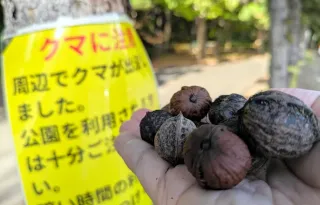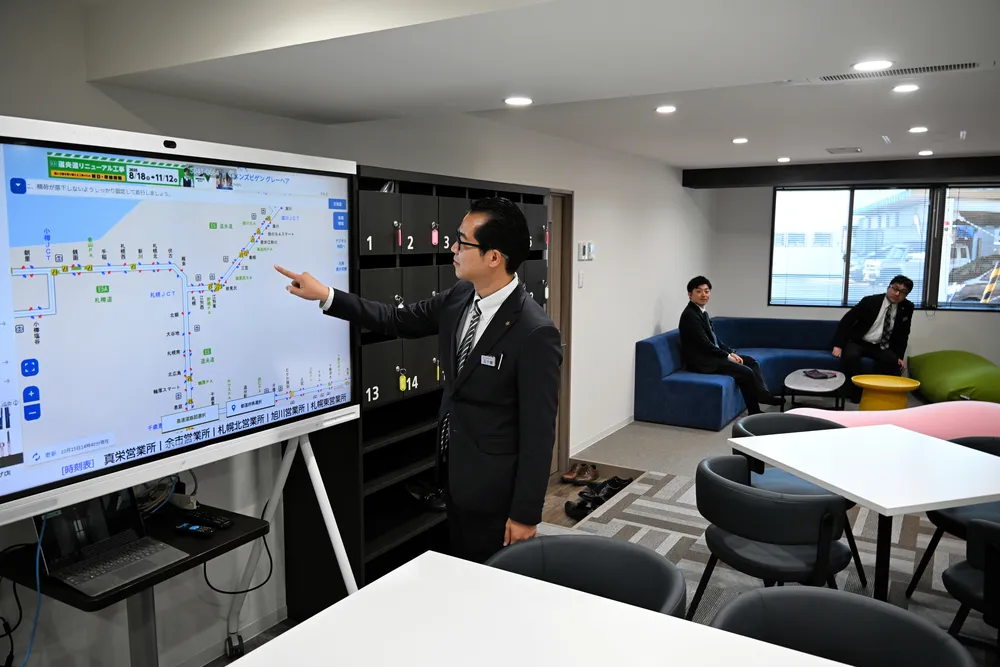Hokkaido Chuo Bus (Otaru) has established a new driver rest room on the first floor of a building near its Sapporo depot (Kita 7 Higashi 4, Higashi Ward). The facility includes a nap room with reclining sofas and a lounge area for conversation and meals. By improving working conditions, the company aims to attract and retain drivers amid current shortages.

Hokkaido Chuo Bus
Hokkaido Chuo Bus is a major transportation company providing bus services throughout Japan’s northern island of Hokkaido. It was established in 1955 through the merger of several smaller bus operators, growing to become a key regional transit provider. The company connects urban centers like Sapporo with rural areas and tourist destinations, playing a vital role in Hokkaido’s transportation network.
Otaru
Otaru is a historic port city on Hokkaido, Japan’s northernmost island, which flourished in the late 19th and early 20th centuries as a major hub for herring fishing and trade. Its history is preserved in the beautifully restored stone warehouses along the Otaru Canal and in its old merchant houses, which now house museums, shops, and glassworks. The city is also famous for its music boxes and its role in the development of Hokkaido’s railway system.
Sapporo depot
The Sapporo Depot is a historic red-brick railway station building in Sapporo, Japan, constructed in 1880. It served as a vital hub for the development of Hokkaido, connecting the island to the rest of Japan. Today, it is a preserved cultural property housing shops, restaurants, and event spaces.
Kita 7 Higashi 4
“Kita 7 Higashi 4” refers to a major intersection and surrounding neighborhood in Sapporo, Japan, known for its vibrant nightlife with numerous bars, restaurants, and entertainment venues. The area’s history is tied to the development of Sapporo’s grid-patterned streets, which were laid out during the Meiji era as part of Japan’s northern frontier expansion. Today, it remains a popular destination for both locals and tourists seeking food and drink.
Higashi Ward
Higashi Ward is one of the nine wards of Nagoya, Japan, a major city in the Aichi Prefecture. Historically an industrial and port area, it is home to significant cultural sites like the Nagoya Castle and the Atsuta Shrine, one of Japan’s most important Shinto shrines. Today, it is a dynamic urban center blending its historical heritage with modern commercial and residential developments.
Sapporo
Sapporo is the capital of Hokkaido, Japan’s northernmost prefecture, which was developed in the late 19th century during the Meiji period as a modern planned city. It is now internationally famous for its annual Sapporo Snow Festival, its beer (the first brewery in Japan was established there in 1876), and for having hosted the 1972 Winter Olympics.
brown bears
Brown bears are not a specific place or cultural site, but a species of large mammal found across North America, Europe, and Asia. They have a deep cultural history, often featuring prominently in the myths and folklore of many indigenous peoples, who have historically revered and sometimes hunted them. While not a built site, viewing areas like at Katmai National Park in Alaska have become famous cultural attractions for observing these animals in the wild.
parks
Parks are public green spaces designed for recreation, leisure, and community gatherings. Their history often dates back to ancient times, with early examples including royal hunting grounds or sacred groves, but the modern public park movement gained prominence in the 19th century to provide urban populations with access to nature and improved public health. Today, they serve as vital community hubs for activities, relaxation, and environmental conservation.






